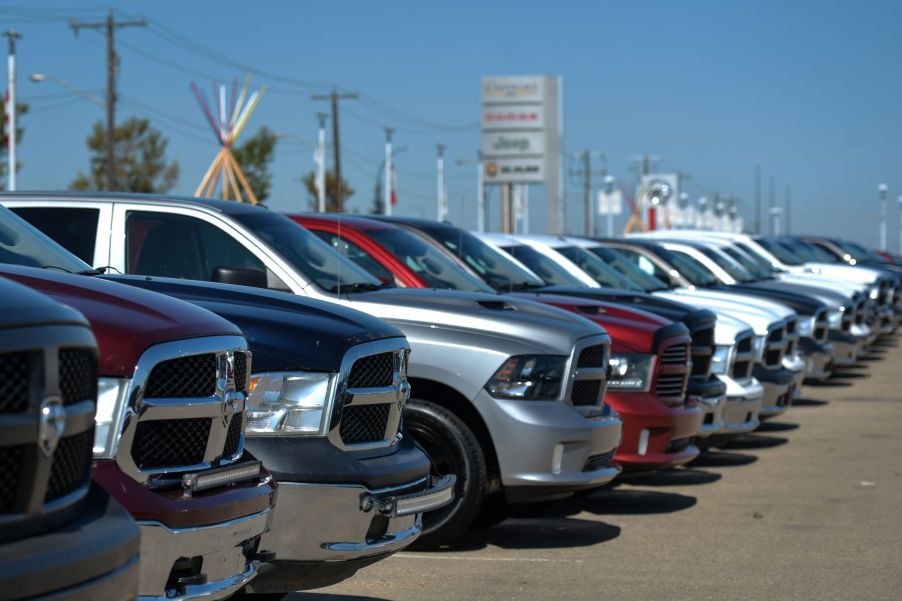
February Actually Saw a Drop in Used Car Prices
Many industries have been hit hard by the coronavirus (COVID-19) pandemic, and the automotive industry is among the most impacted. The semiconductor chip shortage alone has cost the car industry hundreds of billions of dollars. That shortage has impacted production, and a labor shortage is impacting factories as well, with fewer workers to keep up with demand. With those shortages in supply and labor, new and used cars have hit record high prices in the last year. However, despite all this, some car costs went down for a brief time in February 2022.
How much have car prices gone up?

Kelley Blue Book compiled data on car price increases in the last few years. It’s been steady. In 2019, the average new car cost $1,799 more; in 2020, that increase hit $3,301. However, in 2021, the jump was far from steady – new cars cost an average of $6,220 more.
Things were worse for used car buyers due to fewer new cars on offer. The Bureau of Labor Statistics data shows that the cost of used cars and trucks increased 41.2% from February 2021 to February 2022. Even totaled and wrecked vehicles are more expensive.
Earlier this year, used car prices went up by $1,500 in just a week. A recovering economy is pushing demand for more cars while many large automakers don’t have the hundreds to even thousands of semiconductor chips needed to satisfy it.
That shortage won’t ease any time soon, either. Intel CEO Patrick Gelsinger said in July to investors that “it will take another one to two years before the industry can catch up with the demand.” JP Morgan Managing Director Gokul Hariharan was a bit more optimistic with CNBC. He says it could be the middle of 2022 when the shortage eases.
Will new and used car prices continue to drop?
With this price increase continuing for years, there is some sign of hope: Automotive News notes the Manheim Used Vehicle Value Index fell 2.1% in February, the first decline since Aug. 2021.
Cox Automotive, which compiles the index, reports the average used car listing price dipped to $27,608, down from the Dec. 2021 peak of $28,000. Supply at dealer lots is up, too; the inventory of used vehicles in the U.S. is at 2.62 million units, per Cox Automotive data. That’s up from the 2.55 million observed at the end of January and up 5% from the end of Feb. 2021.
Of the more than two million cars in inventory, the less expensive ones sell faster. Cox Automotive reports vehicles under $10,000 had a 32-day supply, those at $10,000-$15,000 were at 37 days’ supply, and those at $15,000-$35,000 ranged from 43 to 59 days.
Automotive News also notes the Black Book’s Used Vehicle Retention Index fell in February. Wholesale prices declined for all segments except for compact and full-size vans.
Due to tax season, Black Book and Cox Automotive expect demand to be affected in the coming weeks and months. Black Book chief data science officer Alex Yurchenko says the boost to retail demand is weaker than in a typical pre-pandemic year. However, Cox Automotive says the average refund is up 13%, and more refunds being issued could drive more demand for used vehicles.
Which used cars have been impacted the most?
If you are one of the many looking for a used car due to shortages in new models, there are a few to avoid if you’re looking for a better bargain. The Wall Street Journal reports 10 vehicles, in particular, have gone up massively in value over the last year and could be hard to find at a reasonable price on the used market:
- Dodge Grand Caravan (up 69%)
- Nissan Versa (up 66%)
- Toyota Prius (up 61%)
- Kia Forte (up 58%)
- Volvo S60 (up 56%)
- Chevrolet Sonic (u[p 55%)
- Mazda 3 (up 54%)
- Audi A5 (up 54%)
- BMW i3 (up 53%)
- Kia Rio (up 51%)
Fortune compiled a similar list but widened the scope to November 2020. The Nissan Leaf saw the most significant jump – a 64% increase, equating to more than $8,000 in value – ahead of the Mitsubishi Mirage (52.3%) and the Chevrolet Spark (50.7%).


